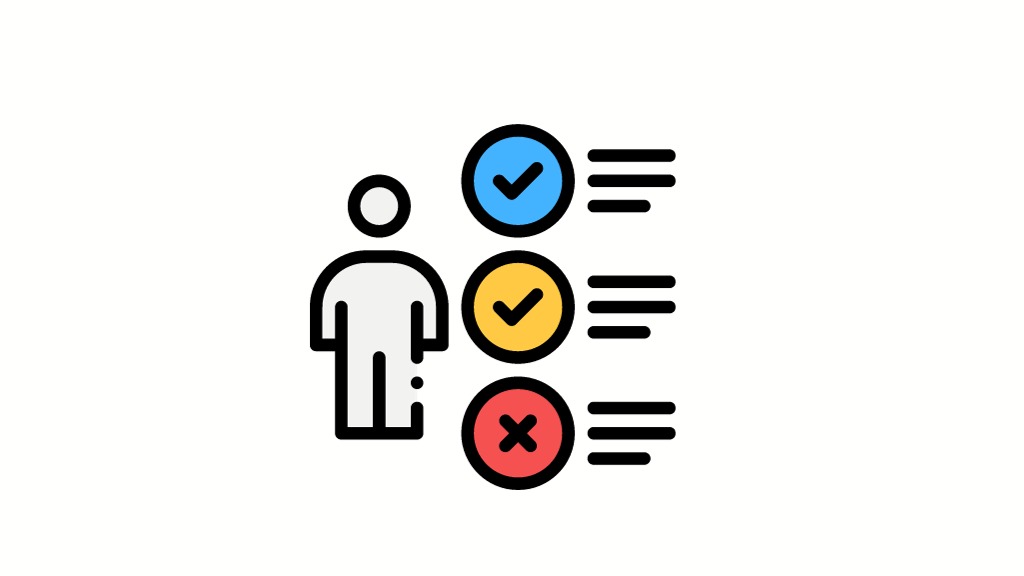Have you ever explored the hidden corners of your website, only to discover a forgotten digital opening?
These unnoticed areas, known as orphan pages, may be secretly affecting your website’s performance and online visibility.
Orphan Pages are the lonely sections of a website that appear to be neglected, detached, and forgotten. Unlike well-connected pages, which may be accessed via navigation menus or internal links. Orphaned pages live in isolation, without the digital roads that guide customers around the virtual environment.
Understanding the nature of orphan pages and how to detect and correct them is essential for website owners, digital marketers, and SEO enthusiasts alike.
This article will teach you what they are, why they’re terrible for SEO, and how to identify and fix them.
What are Orphan Pages?

Orphan pages are web pages inside a website that are not linked to other pages on the same site. These pages can exist for a variety of reasons, such as being left behind after website updates, having out-of-date material, or just being neglected during site design and structure. Addressing these pages is important for many reasons.
- First, it improves the user experience by making all valuable material easily accessible.
- Second, search engines depend on internal links to determine the hierarchy and relevancy of pages inside a site, thus these pages might not get the level of importance they deserve in search results.
Orphan pages may appear on your website for several reasons, including:
- Internal links are modified during a CMS or domain transfer.
- Category pages are eliminated without redirection of internal links.
- Landing or seasonal pages used for a certain campaign were never turned off or removed.
- Incorrectly-used CMS
- Page variants used during A/B testing are taken down once the person who ran the campaign departs the firm.
How do Orphan Pages affect SEO?

Many consider orphan pages harmful to SEO for several reasons:
a. The Page Does Not Get Indexed
Search engine crawlers cannot access an orphan page because it lacks links. If they can’t get to the page, they can’t crawl or index it. Failure to index the page can result in its absence from search results.
However, search engine crawlers also look at your XML sitemap, which is a record of all of your website’s pages.
So, in principle, the bot may find an orphan page through your sitemap even if you haven’t linked to it anywhere. However, this doesn’t cancel out the need to address the issue.
b. Poor Search Rankings
A page’s ranking in search engine results pages may be impacted by a lack of internal links, potentially reducing organic search traffic to your site, even if the page has been crawled and indexed.
Building internal links is a strategy for spreading link equity throughout your website. If a page has no inbound internal links, it will not gain link equity from other pages on your site.
c. Orphan Pages Can Take up a Lot of Crawl Budget
Having a substantial amount of low-value orphan pages may consume a valuable crawl budget that could otherwise be used to crawl your more essential pages and new content on your site. As a result, these pages may be slowing down your SEO performance.
d. Poor User Experience
Without inbound links from navigation menus or other sites, these pages are practically invisible to visitors.
The only way a person may access an orphan page is to input the URL. The user cannot accomplish this unless they are aware of the page’s existence.
Concealing the orphan page from your readers’ view renders it useless, even if it includes content that would be useful to them.
Characteristics of an Orphan Page!

Orphan pages may have unique properties that set them apart from other pages on a website. Here are some common characteristics of orphan pages:
- No Internal Links: The lack of internal links connecting to it from other pages on the same website distinguishes an orphan page.
- This implies that consumers can’t discover it unless they input the URL or come across it via external links.
- Low Visibility: Because of the absence of internal connections, orphan sites are frequently invisible to search engines and crawlers. This renders them unlikely to show in search results, greatly lowering their organic traffic potential.
- Poor User Experience: Orphan pages confuse and disengage users. Landing on a page with no navigation or connections to relevant information can be irritating and result in high bounce rates.
- Potential Broken Links: Orphan pages are frequently ignored and may remain undisturbed for long periods. This might result in broken internal links inside your website if their content or placement changes, reducing user experience and SEO.
- Obsolete Content: As you update and amend the material on your website, orphan pages are likely to become obsolete. Without frequent care, they may include incorrect or irrelevant information, lowering their usefulness.
- Not indexed by search engines: Orphan pages are frequently invisible to search engines such as Google. It’s as if they’re playing hide and seek and never get discovered.
- Low Page Authority: Internal linking is an important aspect in assessing the authority of a page on a website. Orphan pages frequently lack the essential link juice (authority) that comes from being linked to other pages, limiting their total ranking potential.
- Difficult to Navigate: Orphan pages make it more difficult for visitors to navigate a website since there are no obvious paths or contextual connections to direct them from one page to the next.
- Poor SEO Performance: Orphan pages often perform poorly on SEO since search engines rely on internal links to comprehend a website’s structure and hierarchy. Without internal links, search engine algorithms may not pay enough attention to these pages.
Why Orphan Pages Exist?

Non-indexable orphan pages are quite typical in some instances, such as a PPC landing page or a campaign targeting a specialized audience.
However, in some cases, these pages exist by accident and slide through the cracks during SEO checks. Here are some common reasons for these pages to exist:
- Poor or inadequate internal linking structure.
- Poor housekeeping.
- Trouble
- Regular updates and site migrations may lead you to lose track of pages and their links.
- Lack of updating
- Rather than relocating old campaign or landing pages that are no longer needed, such as previous event pages, discontinued product pages, and limited-time deals, to another area of the site, such as an archive page, consider removing them.
Not all orphaned pages are bad. Intentionally developing private pages or temporary campaign pages is a common practice.
However, it is important to detect and resolve unintended orphan sites that might impact your SEO and user experience.
How to Find Orphan Pages?

Identifying orphan pages on a website requires an in-depth examination of its structure and content. Here are a few methods and tools for finding orphan pages:
- Crawl Audit Tools: Use an orphan page-checking tool such as Screaming Frog or Ahrefs. Enter your website’s URL to start the crawl. Once done, check the report for pages that do not have internal links.
- Sitemap Comparison: First, prepare or discover your present website’s sitemap. Next, use a crawling tool to generate a list of all indexed pages. Compare the two lists to identify any differences, taking care of pages that show in the sitemap but not in the crawl results.
- Log File Analysis: You may access your server logs using your hosting platform or server management tools. Analyze the logs using software developed for log file analysis, looking for sites that receive no traffic from users or search engine crawlers.
- Google Analytics: Log in and go to the ‘Behaviour’ area. Look for pages that have had little or no traffic over a long period. Double-check these pages to see if they are orphans.
- Internal Search: Conduct searches on your own website for unique words or pages. Check to see if any pages show in the results but look unconnected or infrequently linked to other portions of the website.
- Backlink Analyzers: Tools such as Moz or Majestic give information about your website’s backlink profile. Identify sites with few or no backlinks and check if they are internally connected to your site.
- Manual Inspection: Conduct regular reviews of your website, particularly after large modifications, restructures, or content additions. Manually check for pages that are isolated or not part of the main navigation.
How to Fix Orphan Pages?

Orphan pages are like lonely islands on your website, isolated from the rest of the content and invisible to search engines. They can hurt both your website’s SEO and user experience. But don’t worry there are ways to fix them! Here’s how.
1. Identify Orphan Pages
- Use a crawler or site map tool to find pages with no inbound links.
- Check analytics for pages with traffic but no referrals.
- Review site search queries landing on pages with thin content.
2. Link to Orphan Pages
- Add navigation menu items pointing to these pages.
- Create footer links to these pages.
- Interlink related content to these pages where relevant.
3. Consolidate Thin Content
- Merge multiple orphan pages around one topic into a single robust page.
- Redirect the orphan URLs to the new consolidated page.
4. Update Internal Site Search
- Submit orphan pages to be re-indexed by your internal search.
- Monitor search queries to continue identifying pages.
5. Improve Technical SEO
- Fix duplicate content issues.
- Optimize page titles, meta descriptions, and alt text.
- Submit XML sitemaps containing orphan URLs.
6. Prune Irrelevant Pages
- Remove outdated or redundant orphan pages entirely.
- Redirect any external links to the most relevant alternative page.
Following these steps carefully can help remove orphan pages by linking to them, merging them, or deleting them. The result is a more consistent site design and user experience.
Orphan Pages and SEO!
Orphan pages are like secret rooms on your website, unnoticed by both visitors and search engines. The way they are separated from the rest of your site means they don’t contribute as much to your SEO efforts as they could.
Improperly managing orphan pages can negatively impact SEO. Here are some of the most important SEO issues to be aware of with orphan pages:
- Lost Traffic: Orphan pages do not receive the attention they deserve since they are difficult to discover. As a result, some of your material may go unnoticed.
- Wasted Content: You’ve worked hard on your pages, but if they’re orphaned, they don’t provide value to your site or attract visitors.
- Lower authority: Well-structured websites score higher in search engines. Orphan pages might indicate a weak site structure, which reduces overall site trustworthiness.
- Internal Linking Opportunities: Internal links help establish authority and direct people through your website. Orphan pages do not contribute to or profit from the site’s network in the absence of links.
Understanding and resolving orphan pages not only improves the internal structure of your website but also helps your SEO strategy by making every page matter in terms of attracting and engaging users.
Avoiding Orphan Pages in the Future!

Every website owner wants to be ranked at the top of search engine results pages. That is why it is important to avoid these pages from appearing. Here are some tips to help your website avoid creating additional orphan pages in the future:
- Strengthen internal linking guidelines: Establish clear guidelines for authors to connect to related information, and ensure that all new pages are linked from relevant pages.
- Conduct ongoing link audits: Use tools to discover orphaned or thin content pages regularly and address concerns as soon as possible. Do not let stuff pile up.
- Consolidate topics: When generating new information, seek for ways to extend current pages rather than establishing new orphan pages about the same subject.
- Update site design: Examine your information architecture and navigation schemes to detect gaps that might result in orphan pages for specific themes or subsections.
- Make use of breadcrumbs: Breadcrumbs are a navigation feature that indicates where visitors are in the website structure and how to return to the main pages. This can help prevent orphan pages by making it easier for users to find similar pages.
- Manage content expiration: Establish explicit standards for removing obsolete material and redirecting or relinking to fresh sites. Do not let the old stuff go orphaned.
- Enforce the deletion process: If pages must be destroyed, ensure that all links directing to those pages are likewise removed to avoid the creation of orphan pages.
Conclusion
These pages are website pages that lack inbound links to other internal sites. They highlight issues such as poor user experience, crawling and indexing challenges, and broken links. The best practice is to constantly identify these pages using a variety of methods, including website crawlers, analytics, site search data, and manual assessments. Look for pages that get traffic but have no internal links leading to them.
Once identified, orphan pages should be resolved by connecting to relevant sites, condensing information, redirecting URLs, and removing obsolete pages. It is important to create a system of oversight for identifying, monitoring, and maintaining orphan pages on an ongoing basis.
Fixing pages helps website navigation, user experience, and search engine visibility. It also helps simplify the content and improves information architecture. Addressing orphan pages should be a normal part of any website maintenance plan to ensure that a site’s structure and navigation remain ideal over time.
Regular orphan page audits, consolidation, redirection, and link-building are essential for maintaining an effective website structure with strong internal linking and discoverability.
FAQs
1. What are orphan pages?
Orphan pages are web pages that lack inbound internal links from other sites on the site. They eventually become “orphaned” from the rest of the site’s content.
2. How do pages become orphaned?
When you remove or redesign their original linking pages, pages become orphaned, leading to the loss of internal linkages. Outdated content and thin pages are frequently at risk of becoming orphaned.
3. What are some methods for identifying orphan pages?
Methods include using web crawler tools, checking analytics data for non-referred traffic, evaluating site search queries, auditing navigation menus, and manually searching for unlinked topics.
4. Can orphan pages affect SEO?
Yes, they hurt SEO. Search engines may not fully crawl and index them, leading to lower ranks.
Addressing these is important to having a strong online presence.
5. How can you avoid future orphan pages?
Strong internal linking rules, continuing link audits, site architecture reviews, content sunsetting policies, governance processes, and site search usage all contribute to reducing orphan page hazards.




